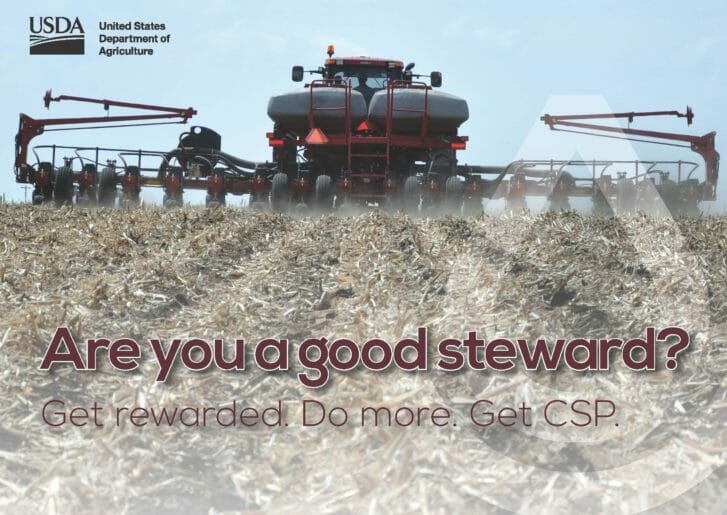Conservation Stewardship Program: Not Just for Big Farms
Through CSP, the NRCS provides farmers and ranchers with technical and financial assistance to implement and maintain conservation activities on their farms. Enrollment is competitive and contracts through the program are for 5 years. The 2016 sign-up deadline is March 31 for new and renewing farms.
Farmers, ranchers and the organizations working to promote on-farm conservation practices are still awaiting details regarding the previously announced changes to the Conservation Stewardship Program set to be implemented in 2017. But there’s already been one positive change made to CSP for the 2016 sign-up period: the Natural Resources Conservation Service has increased the minimum annual contract payment to $1,500, and extended this minimum payment to all contracts.
The previous minimum payment was only available for CSP contracts with beginning or socially disadvantaged farmers and ranchers, and was set at $1,000. In order to make the program more attractive to smaller farms, the annual minimum payment for CSP contracts was raised to $1,500 and extended to all farms starting the program.
Considering the national average for CSP payments is $18 per acre, this change likely affects anyone farming less than 80 acres but is significant for anyone farming less than 50 acres. Unfortunately, this minimum payment increase is not applicable to those who have an existing contract or those who are up for a renewal.
Just how does the payment system work?
Annual land use payments = land use acres x performance points x land use payment rate
Performance points are calculated using the Conservation Measurement Tool, which is designed to evaluate existing and proposed conservation activities. The CMT calculates performance points which are then used to rank the applications and, if admitted, for payment purposes as well.
Land use payment rates are determined by the type of land use (cropland, pasture, range, forest) and a combination of your “additional activity payment rate” and your “existing activity payment rate.” The latter of the two is determined by your answers in the CMT regarding the conservation practices your farm currently employs, while the former is determined by what you intend to employ. Unfortunately, this method does not appropriately incentivize current conservation activities on your farm. It helps your overall points, though not as much as we believe it should, and we’ve been pushing for this to change in the 2017 CSP overhaul.
| Land use | Additional Activity Payment Rate |
Existing Activity Payment Rate |
| Cropland | $0.40157 / point | $0.02897 / point |
| Pasture | $0.31870 / point | $0.02490 / point |
As a very basic example, if farmer Jay has a 10 acre orchard and is interested in enrolling in CSP to help offset the costs of conservation practices, he may want to do the bundle BCR11 (which includes 5 enhancement activities addressing orchard and vineyard resource concerns, such as using drift-reducing spray nozzles, establishing pollinator habitats, planting cover crops, etc). Let’s say Jay uses the CMT and is awarded five performance points. Each of the five conservation activities in BCR11 add up to an annual payment of $20.08 (10 x 5 x .40157 = $20.08), which is a total annual payment of $100.40.
Prior to this year, $100.40 may not be worth the time Jay spends signing up for the program and implementing five new conservation practices on his 10 acre farm. Needless to say, the new minimum payment of $1,500 should be pretty attractive for someone like Jay.
Furthermore, although applications for the program are ranked based on their score using the Conservation Measurement Tool, the size of the farm is not a factor. So farms of similar composition, despite their size, have potential to score the same number of points.
How do you sign up?
Whether you’re renewing an application or submitting a new one, March 31 is the deadline to be considered for the 2016 fiscal year. Only the initial 11 question application is due to your local NRCS office at the end of March, which asks for contact information as well as basic land ownership and production information.
Once the initial application is completed, you will then need to meet with your local NRCS staff person to complete the Conservation Measurement Tool. A short time after completing the CMT, NRCS will do an on-farm visit to those farms with high enough ranking to be enrolled. Working with the NRCS, you will then develop a CSP plan and contract.

